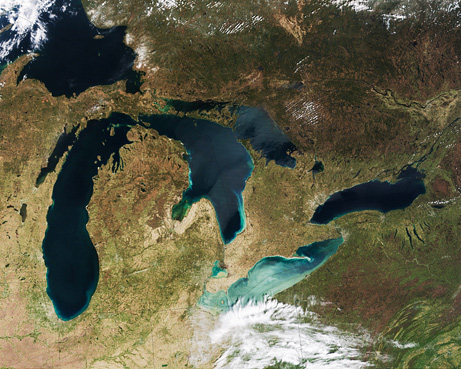
Though no one disputes the occurrence of the frigid period, known as the Younger Dryas, more and more researchers have been unable to confirm a 2007 finding that says a collision triggered the change.
The earlier study says the drop in temperature, plus fires from the purported impact, wiped out sabertooths, mastodons, and other giant animals, and may have caused the decline of an early civilization known as the Clovis culture.
The 2007 research was based on a combination of archaeological artifacts and extraterrestrial magnetic grains in soil samples found in a thin layer of sediment throughout North America.
The original team, led by Richard Firestone, a nuclear chemist at Lawrence Berkeley National Laboratory, also found what he said are traces of charcoal and microscopic bits of carbon from intense fires ignited by the collision.
However new research, presented at a meeting of the Geological Society of America this week in Portland, Oregon, has taken aim at all of these findings.
Wetlands and Mini-Meteorites
Nicholas Pinter, a geologist at Southern Illinois University, argued that black mats described as charcoal in the 2007 research weren't actually charcoal.
Instead they were from ancient, dark soil formed in a long-ago wetland, Pinter said.
"It's a misunderstanding of what these layers represent."
Likewise, the small amounts of carbon "are not uniquely associated with high-intensity fire," he said.
As for the magnetic grains, they may well have come from outer space, he said.
But the grains are likely from the 30,000 tons of tiny meteorites that fall to Earth each year.
He found such grains in equal or greater concentrations at many other layers dating to other time periods.
Evolution of Style
Vance Holliday, an archaeologist at the University of Arizona, added that there is no sign that the demise of the Clovis culture was caused by a comet crash.
Around the time of the cold snap, the style of spearpoints changed - which Firestone and colleagues argued was evidence that the Clovis peoples had declined due to the comet impact.
But Holliday said it reflects a normal evolution in preference. He compared spearpoint designs to the appearance - and disappearance - of tail fins on classic automobiles.
"We really don't know what style means in the archaeological record," he said. Tastes "come and go. We don't know why."
But "an extraterrestrial impact is an unnecessary solution for an archaeological problem that doesn't exist."
Sticking to His Guns
Firestone, the original proponent of the comet theory, is sticking to his guns.
Though no one can prove the Clovis disappeared, the total number of spearpoints plummeted after the impact, he said by email.
Likewise, other research has shown a gap of more than a hundred years between the Clovis and the ensuing Folsom culture, Firestone pointed out.
As for the other evidence, the comet-impact layer is very thin, he told Australia's Cosmos Magazine, and is easy to miss if samples are diluted with soils from adjacent layers.
University of Southern Illinois' Pinter is also wrong about the charcoal and carbon fragments, he added. These substances are not widespread as soil would be, and are found only in a narrow band of sediment.
In addition, the magnetic grains are not the same composition as what's found in typical tiny meteorites, he added.



"As for the magnetic grains, they may well have come from outer space, he said.
But the grains are likely from the 30,000 tons of tiny meteorites that fall to Earth each year.
He found such grains in equal or greater concentrations at many other layers dating to other time periods. "
That's because there have been many other impact events, you idiot!